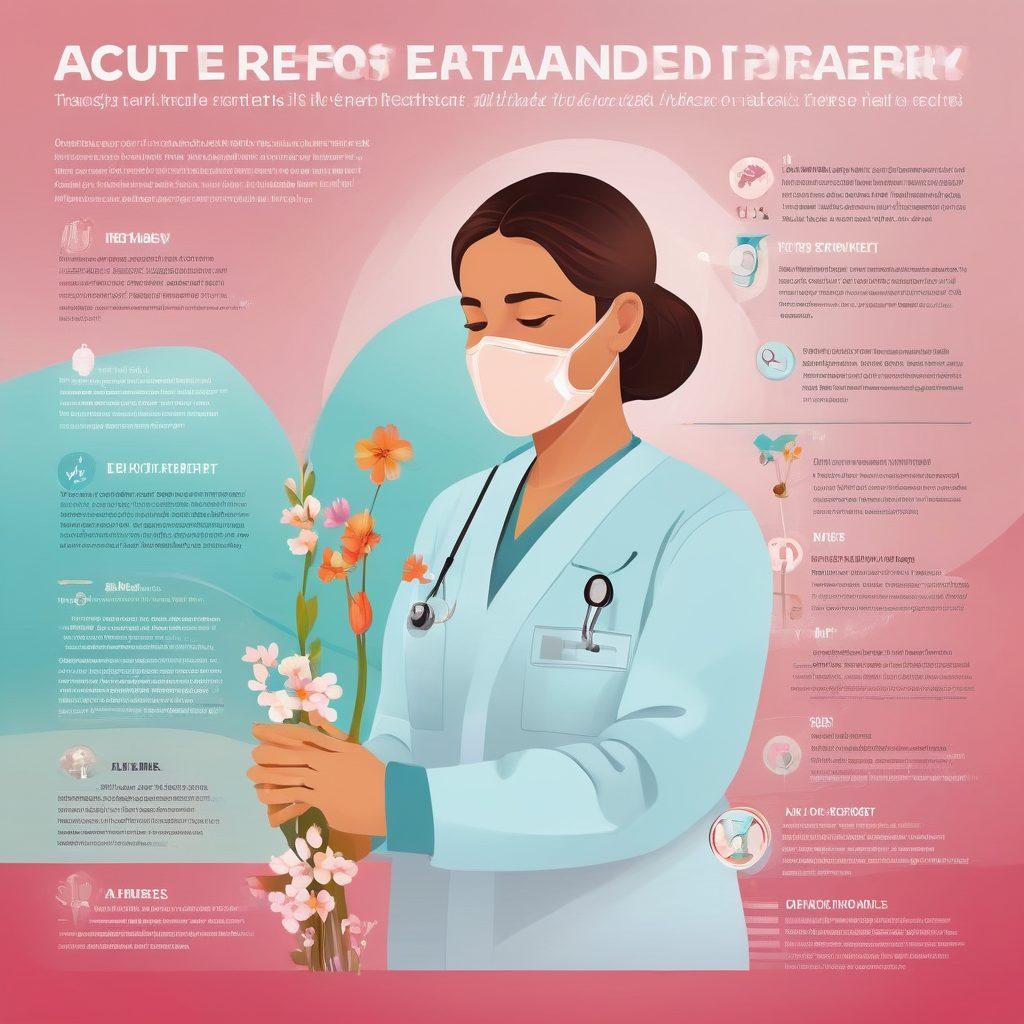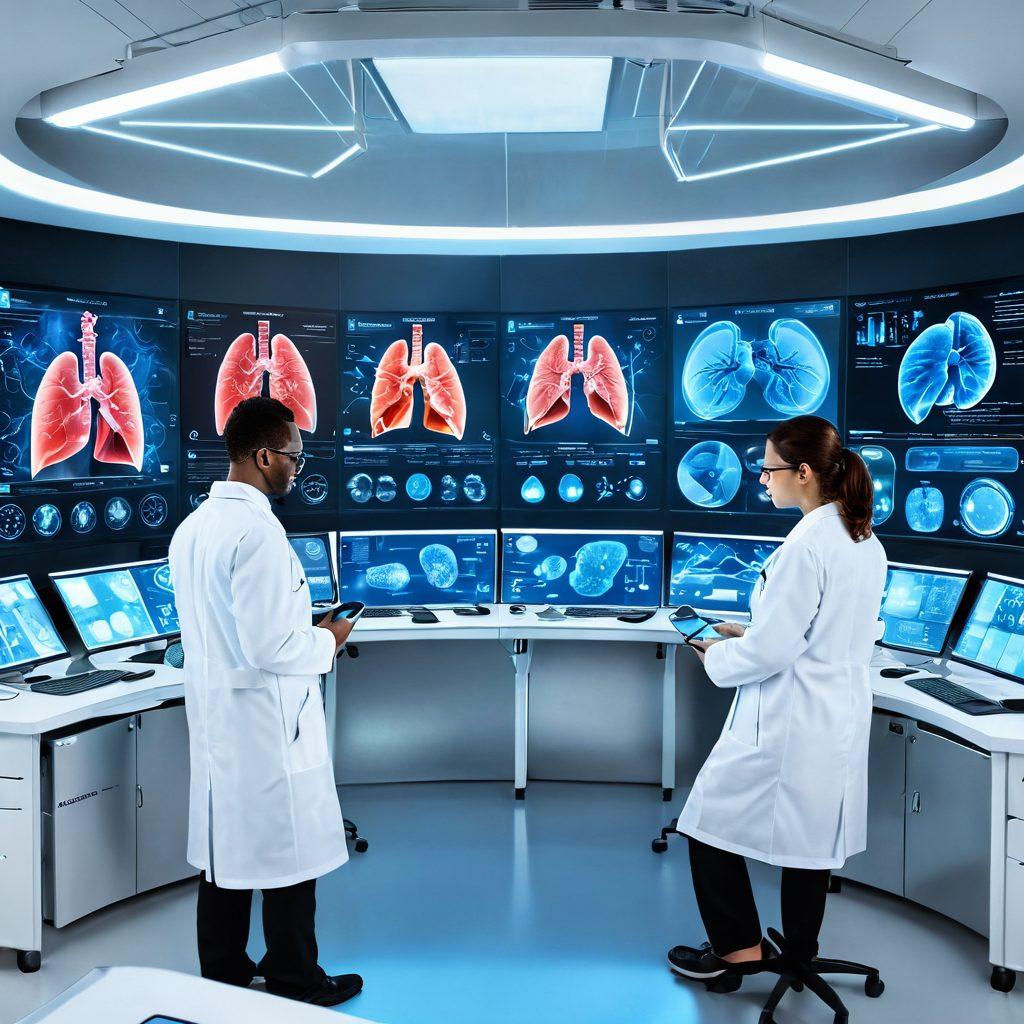Navigating the Challenges of Acute Respiratory Distress Syndrome: Insights on Management and Treatment
Imagine walking into a hospital’s intensive care unit and witnessing the sheer chaos that comes with Acute Respiratory Distress Syndrome (ARDS). It’s a daunting sight—patients gasping for air, machines beeping rhythmically, and medical staff hustling to stabilize their fragile condition. But in this storm of urgency and confusion lies an opportunity—an opportunity for mastering ARDS management with effective strategies that can save lives. In this blog, we will delve deep into the intricacies of ARDS, offering insights on management and treatment that can make all the difference in critical care settings.
Understanding the nature of ARDS—characterized by acute lung injury and severe respiratory failure—is the first step for any healthcare professional tackling this condition. Picture a patient's lungs, rapidly filling with pulmonary edema, impairing their ability to exchange oxygen efficiently. The emotional and physical toll is immense, not just for the patient but for their families as well. So, how do we address the challenges posed by ARDS? The answer lies in a combination of timely intervention, advanced therapy, and unwavering support.
One essential strategy in ARDS management involves the critical use of mechanical ventilation. But it's not just about cranking up the oxygen therapy and calling it a day. Healthcare providers must embrace 'lung protective strategies,' which prioritize low tidal volume ventilation to minimize ventilator-induced lung injury. This approach is not just a protocol; it’s a lifeline for these patients. As Dr. Yoshiro Kato famously said, "We must keep our lungs from being our own enemy." So, what specific protocols should clinicians adopt to navigate these treacherous waters of ARDS?
Furthermore, addressing the underlying causes of sepsis-related ARDS is crucial in effective ARDS treatment. Early identification and aggressive treatment of infections can prevent the progression to respiratory failure. This is a call to action for management teams in critical care; understanding how to intervene earlier may mean extending not only medical help but hope to patients and their families. As challenging as it seems, what innovative strategies can we implement to recognize and combat these pulmonary complications in real time?
Finally, ongoing ARDS research is providing promising avenues for novel treatment modalities, pushing the boundaries of our understanding of this inflammatory lung disease. From exploring new pharmacological options to utilizing adjunctive therapies, the future seems bright—but it’s the practical application of this knowledge in the intensive care unit where we can truly master ARDS management. As we ask ourselves, how can we translate research into action, we realize that empowering medical teams with current findings is essential in our pursuit of excellence in critical care.
From Diagnosis to Recovery: Understanding the Treatment Spectrum of Acute Respiratory Distress Syndrome
Acute Respiratory Distress Syndrome (ARDS)—these three seemingly simple words can usher in a whirlwind of distress, uncertainty, and anxiety for both patients and their families. From the moment a diagnosis is made, it feels as though the world is turned upside down. For many, ARDS represents a struggle for breath, a battle against the odds, and a fight to regain normalcy in the face of respiratory failure. It’s vital to comprehend that while ARDS is a daunting condition, understanding the treatment spectrum and management strategies can illuminate the difficult path from diagnosis to recovery. What does this journey look like, and how can effective ARDS treatments make a difference in the fight against lung injury?
Diving into the intricacies of ARDS treatment, it’s essential to recognize that the approach to managing this condition varies based on its underlying causes, severity, and individual patient circumstances. Whether it results from sepsis-related ARDS, pneumonia, or acute lung injury, effective ARDS management hinges on a tailored treatment strategy. Thanks to advancements in ARDS research, healthcare providers are equipped with an array of tools—from mechanical ventilation to oxygen therapy—that can help restore bronchial function and normalize pulmonary complications. As patients stabilize, awareness of ARDS protocols and lung protective strategies will serve as a beacon of hope, guiding both caregivers and families on the road to recovery.
Throughout this journey, the intensive care unit (ICU) stands as a battleground where critical care professionals work tirelessly to uphold the standards of ARDS management. As they employ ventilator support and navigate the intricacies of pulmonary edema, a fundamental question persists: How can family members best support their loved ones during this terrifying time? Engaging with medical staff, keeping informed about treatment plans, and fostering a positive atmosphere can profoundly influence the recovery trajectory. Remember, each shared story of resilience and hope can uplift the spirits of those fighting amid ARDS challenges.
Imagine lying on a hospital bed, surrounded by beeping machines, feeling the weight of uncertainty rolling in. This was the reality for Sarah, a young mother whose battle with ARDS began after a routine illness spiraled into respiratory distress. As she recounts her journey, she highlights how the diligence of her critical care team, alongside the implementation of lung protective strategies, played a vital role in her recovery. "The world may have looked grim, but hope was ever-present in the professionalism of my nurses and doctors who guided me through each moment," she reflects. Her story is a powerful reminder of how recovery is attainable through dedication and comprehensive ARDS treatment.
As we continue navigating the challenges of ARDS, it’s crucial to remember that the journey toward recovery is often nonlinear, filled with ups and downs. However, each day brings fresh opportunities for improved outcomes through continuous monitoring, reassessment of ventilatory support, and patient-centered care. As families grapple with the realities of this inflammatory lung disease, they are reminded to focus on progress, not perfection. Together, through knowledge and resilience, we can forge a path from diagnosis to recovery, ensuring that ARDS does not define lives but instead serves as a chapter in an inspiring journey of greater understanding and healing. So, let’s ask ourselves: How can we continue to advocate for research and treatment that will enhance the lives of those battling ARDS and its many challenges?
Innovations in ARDS Research: Pioneering Techniques for Lung Protection and Patient Care
In the rapidly evolving field of medicine, few topics ignite as much urgency and innovation as Acute Respiratory Distress Syndrome (ARDS). This condition, characterized by severe respiratory failure and acute lung injury, is a beacon of critical care challenges. What if I told you that ground-breaking research is paving the way for more effective management and treatment of ARDS? The story of ARDS is not just one of struggle; it’s also one of hope and discovery, gripping the hearts of healthcare professionals determined to improve patient outcomes through innovative techniques for lung protection and care.
Imagine a patient in the intensive care unit, fighting for every breath, their lives hanging in the balance due to complications of sepsis-related ARDS. This scene plays out in many hospitals every day, with healthcare providers clashing with the harsh realities of respiratory failure. But what if we could shift the narrative? Recent advancements in ARDS research have begun to unveil pioneering techniques aimed at mitigating lung injury and enhancing ventilator support strategies. Innovations like lung protective strategies are transforming the approach to ARDS management, allowing clinicians to deliver care that truly addresses the complexities of this inflammatory lung disease.
The journey of ARDS treatment isn't without its challenges. As we delve deeper into the mechanisms underlying acute lung injury, questions arise: How can we utilize oxygen therapy more effectively? What protocols should be established to optimize mechanical ventilation for patients with pulmonary edema? With an emphasis on individualized care, ARDS protocols are being scrutinized and revamped to foster bronchial function and prevent further lung damage. The commitment to continual learning and adaptation is crucial, as researchers strive to find the balance between intervention and protection.
Moreover, the evolution of ARDS management extends to the broader understanding of critical care practices. What can we learn from past experiences with lung injury and acute respiratory failure? Each patient embodies a unique narrative, yet the common thread remains the importance of tailored ARDS management plans that consider the varying degrees of respiratory distress. The intersection of technology and patient care has led to a wealth of data being analyzed, revealing patterns that might otherwise go unnoticed. This insightful research is not just about treating the symptoms; it’s about understanding the disease at a fundamental level and revolutionizing care practices.
As we look to the future, one cannot overlook the resilience and innovation present in the field of ARDS research. Healthcare providers around the globe are standing at the forefront, equipped with promising tools and a renewed sense of purpose. The challenge remains vast, but with each breakthrough in lung protection and patient-centered approaches to ARDS management, we are inching closer to transforming the landscape of critical care. How will your understanding of ARDS evolve as these innovative methods unfold? It’s time to rethink our strategies, embrace new knowledge, and advocate for better outcomes in the face of this complex condition.


